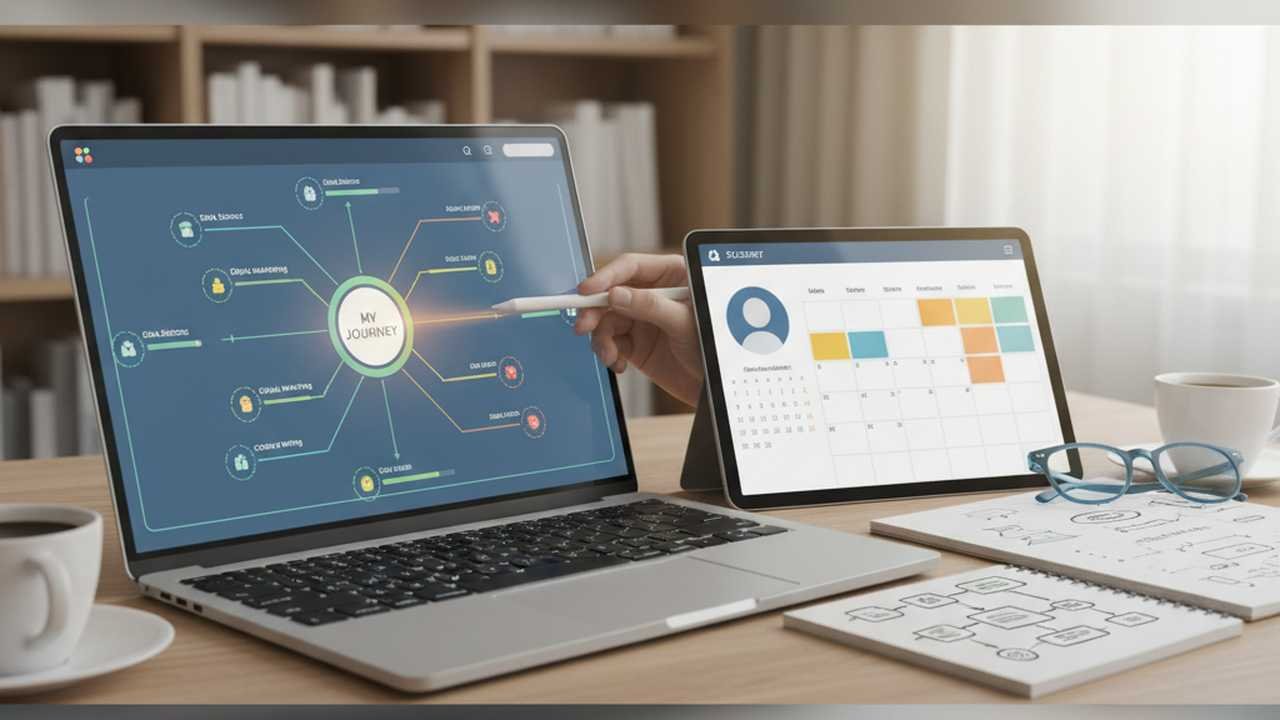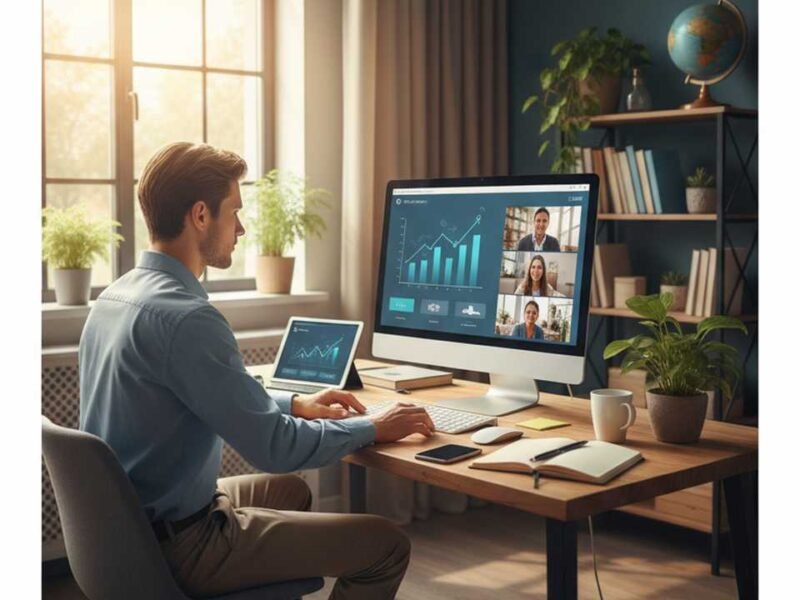In a world where education is increasingly shifting online, the need for personalized learning plans has never been more urgent. The traditional one-size-fits-all approach is rapidly becoming obsolete. Students, educators, and institutions are recognizing the immense value of tailoring learning experiences to individual needs, preferences, and goals. This shift is not just a trend; it’s a necessity for fostering deeper engagement, improving retention, and achieving better educational outcomes.
Imagine a learning environment where every lesson feels relevant, every activity is aligned with personal interests, and every assessment provides meaningful feedback. This is the promise of personalized learning plans (PLPs) in online education. By leveraging technology, data analytics, and a deep understanding of learner profiles, PLPs create a dynamic and responsive educational experience.
However, the journey to creating an effective personalized learning plan is complex. It requires careful planning, the right tools, and a commitment to continuous improvement. In this guide, we will walk you through the essential steps to design and implement a personalized learning plan on online learning platforms, ensuring that each learner’s unique needs are met with precision and care.
Understanding the Importance of Personalized Learning
Personalized learning is more than just a buzzword; it’s a transformative approach that places the learner at the center of the educational experience. Unlike traditional methods that deliver the same content to all students, personalized learning tailors the pace, path, and place of learning to individual needs. This approach acknowledges that learners have diverse backgrounds, strengths, challenges, and aspirations.
The benefits of personalized learning are profound. Studies have shown that when students engage in learning experiences tailored to their needs, they are more motivated, retain information longer, and develop a deeper understanding of the material. Personalized learning also promotes equity by providing all students, regardless of their starting point, with the support they need to succeed.
Moreover, personalized learning aligns with the growing demand for lifelong learning. In a rapidly changing world, the ability to adapt and acquire new skills is crucial. Personalized learning plans empower learners to take control of their educational journeys, fostering a mindset of continuous growth and self-directed learning.
Step 1: Conducting a Comprehensive Learner Assessment
The foundation of any personalized learning plan is a thorough understanding of the learner. This begins with a comprehensive assessment that goes beyond traditional tests. It’s about capturing a holistic view of the learner’s abilities, interests, learning styles, and goals.
Utilize a combination of diagnostic assessments, surveys, interviews, and observational data to gather insights. These tools should measure cognitive abilities, emotional intelligence, prior knowledge, preferred learning modalities, and personal aspirations. The goal is to create a detailed learner profile that serves as the blueprint for the personalized learning plan.
For instance, a learner who excels in visual-spatial reasoning may benefit from interactive simulations and graphic organizers, while another who thrives in collaborative settings might engage more deeply through group projects and discussions. Understanding these nuances allows for the design of learning experiences that resonate with each individual.
Step 2: Defining Clear Learning Objectives
Once a comprehensive learner profile is established, the next step is to define clear, measurable, and achievable learning objectives. These objectives should align with both the learner’s personal goals and the broader educational standards or competencies.
Effective learning objectives are specific, measurable, attainable, relevant, and time-bound (SMART). For example, instead of a vague goal like “improve writing skills,” a SMART objective would be “compose a 500-word persuasive essay with a clear thesis and supporting arguments by the end of the semester.” This clarity provides direction and purpose, enabling both the learner and educator to track progress and make necessary adjustments.
Incorporate flexibility into these objectives to account for the dynamic nature of personalized learning. As learners progress, their goals may evolve, and the learning plan should be adaptable to accommodate these changes.
Step 3: Designing Tailored Learning Pathways
With clear objectives in place, the next step is to design learning pathways that are customized to the learner’s profile. This involves curating content, selecting instructional strategies, and determining the sequence of learning experiences that best support the achievement of the defined objectives.
Leverage the capabilities of online learning platforms to offer a variety of content formats, such as videos, articles, podcasts, and interactive modules. Incorporate adaptive learning technologies that adjust the difficulty and pace based on the learner’s performance. Provide opportunities for learners to choose from different pathways, allowing them to take ownership of their learning journey.
For example, a learner interested in environmental science might choose a pathway that includes modules on climate change, renewable energy, and conservation efforts. Another learner with a passion for technology could opt for a pathway focusing on coding, robotics, and artificial intelligence. These tailored pathways not only enhance engagement but also ensure that learning is relevant and meaningful.
Step 4: Implementing Formative Assessments
Assessment in personalized learning is not just about measuring outcomes; it’s an ongoing process that informs instruction and supports learner growth. Formative assessments play a critical role in this process by providing real-time feedback that guides both the learner and educator.
Utilize a variety of formative assessment methods, including quizzes, polls, peer reviews, self-assessments, and interactive activities. These assessments should be integrated seamlessly into the learning experience, offering immediate feedback that learners can use to adjust their strategies and improve performance.
For instance, after completing a module on a particular topic, learners could take a short quiz that not only tests their knowledge but also provides explanations for correct and incorrect answers. This immediate feedback loop reinforces learning and helps identify areas that require further attention.
Step 5: Providing Opportunities for Reflection and Self-Assessment
Reflection is a powerful tool in personalized learning, enabling learners to gain insights into their own thinking processes and learning strategies. Incorporate regular opportunities for reflection and self-assessment to promote metacognition and self-directed learning.
Encourage learners to maintain journals, participate in discussion forums, or engage in one-on-one conferences to reflect on their learning experiences. Provide guiding questions that prompt deep thinking, such as “What strategies helped you overcome challenges?” or “How can you apply what you’ve learned to real-world situations?”
Self-assessment tools, such as rubrics or checklists, allow learners to evaluate their own progress and identify areas for improvement. This fosters a sense of responsibility and ownership over their learning journey.
Step 6: Integrating Collaborative Learning Opportunities
While personalized learning emphasizes individualized experiences, collaboration remains a vital component of the learning process. Incorporate opportunities for collaborative learning to develop communication, teamwork, and problem-solving skills.
Utilize online platforms to facilitate group projects, discussions, and peer reviews. Encourage learners to share their insights, challenge each other’s ideas, and work together to solve complex problems. These collaborative experiences not only enhance learning outcomes but also prepare learners for real-world scenarios where teamwork is essential.
For example, a group of learners could collaborate on a research project, each contributing their unique perspectives and expertise. Through this process, they learn to negotiate differing viewpoints, synthesize information, and present their findings cohesively.
Step 7: Utilizing Data Analytics for Continuous Improvement
Data analytics play a crucial role in personalized learning by providing actionable insights into learner progress, engagement, and performance. Leverage the analytics tools available on online learning platforms to monitor these metrics and inform instructional decisions.
Regularly review data on learner activity, assessment results, and feedback to identify trends and patterns. Use this information to make data-driven adjustments to the learning plan, ensuring that it remains aligned with the learner’s needs and objectives.
For instance, if data indicates that a learner is struggling with a particular concept, provide additional resources or alternative explanations to support their understanding. Conversely, if a learner demonstrates mastery of a topic, offer enrichment opportunities to deepen their knowledge.
Step 8: Ensuring Flexibility and Adaptability
Personalized learning is not a static process; it requires flexibility and adaptability to respond to the evolving needs of the learner. Design learning plans that can be adjusted as necessary to accommodate changes in goals, interests, or circumstances.
Provide learners with options to modify their learning pathways, set new objectives, or explore different content areas. Encourage open communication to discuss challenges, successes, and adjustments to the plan. This collaborative approach ensures that the learning experience remains relevant and effective.
For example, if a learner develops a new interest in a subject area, allow them to explore related topics or adjust their learning objectives accordingly. This responsiveness fosters a dynamic learning environment that supports continuous growth.
Step 9: Celebrating Achievements and Milestones
Acknowledging and celebrating achievements is essential in maintaining motivation and reinforcing positive learning behaviors. Recognize both small and large milestones to build confidence and a sense of accomplishment.
Implement systems to track progress and celebrate successes, such as digital badges, certificates, or public showcases of work. Provide positive reinforcement through feedback, highlighting strengths and areas of improvement.
For instance, upon completing a challenging project, a learner could receive a digital badge that signifies their achievement. Sharing this accomplishment with peers or family members further enhances the sense of pride and motivation to continue learning.
Step 10: Continuously Evaluating and Refining the Learning Plan
The final step in creating a personalized learning plan is to establish a process for continuous evaluation and refinement. Regularly assess the effectiveness of the learning plan in meeting the learner’s objectives and making necessary adjustments.
Solicit feedback from learners, educators, and other stakeholders to gain diverse perspectives on the learning experience. Use this feedback, along with performance data, to identify areas for improvement and implement changes that enhance the plan’s effectiveness.
By committing to continuous improvement, personalized learning plans remain dynamic and responsive, ensuring that they continue to meet the evolving needs of the learner.
In conclusion, creating a personalized learning plan on online learning platforms is a multifaceted process that requires careful consideration, thoughtful design, and ongoing evaluation. By following these steps, educators can create learning experiences that are engaging, effective, and tailored to the unique needs of each learner. Embrace the power of personalized learning to transform education and empower learners to reach their full potential.

